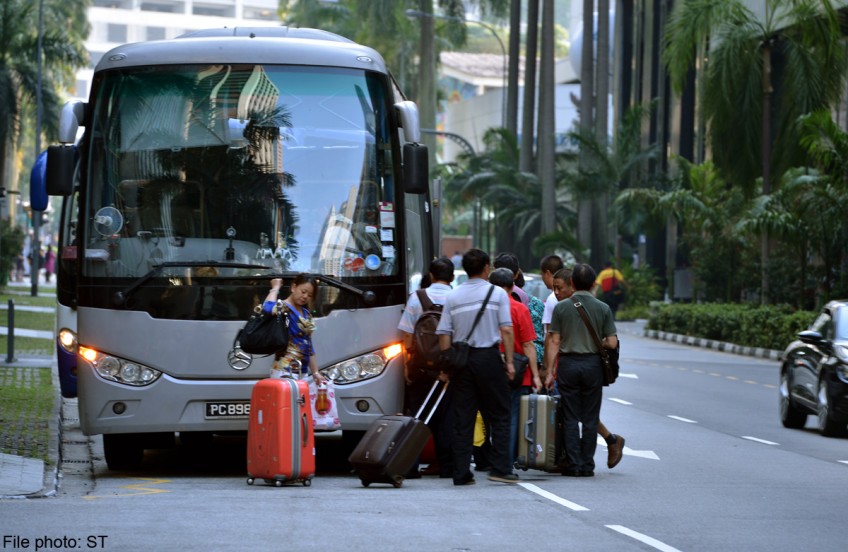LTA looking into issue of blind spots on big buses

SINGAPORE - Guidelines and standards for large buses are to be examined to see if more can be done to help their drivers observe blind spots, the Land Transport Authority (LTA) said yesterday.
The announcement came a day after a coroner's inquiry into the death of three-year-old Kryshan Nirmal Kumar - who was run over by a bus at a cemetery off Old Chu Kang Road last December - suggested that the placement and design of blind spot mirrors for buses should be examined.
Bus operators yesterday also acknowledged that more can be done to tackle the problem.
They say one option is to install cameras, and the Singapore School Transport Association has met a government agency to discuss funding for them.
A spokesman for the LTA told The Straits Times it has noted the coroner's comments, and will study the details of the case to see if existing guidelines need to be enhanced.
The LTA requires all buses to have at least two mirrors that allow drivers to see all the way to the rear on both sides of the vehicle, in line with European laws.
All vehicles have to comply with LTA requirements to be registered for use on the road. Some buses already have additional blind spot mirrors.
Mr Phillip Peh, general manager of Tong Tar Transport Service, said different manufacturers have different specifications.
"Some buses have areas that are very difficult to see," he pointed out, suggesting that CCTV or extra mirrors could be installed.
Tong Tar has so far installed cameras on six of its 60 buses. These allow drivers to look at the sides of the vehicle in real time.
Singapore School Transport Association (SSTA) chairman Wong Ann Lin would like to see camera systems installed on all of his members' buses.
He said the SSTA met a government agency to discuss funding two weeks ago, and is still waiting for approval. He declined to provide further details, citing ongoing discussions.
The system would have cameras inside and outside the bus, he said, as well as a function that tracks schoolchildren on board.
He noted that smaller operators would not be able to afford such systems on their own, but said: "If the technology can be put in, buses will be much safer."
Driving safety expert Gerard Pereira from the Singapore Safety Driving Centre warned, however, that additional mirrors are not a foolproof solution, saying: "You can check all the mirrors you want, but there are usually one or two areas that mirrors can't see as they only cover certain areas."
This is especially the case if bus drivers are rushing to move off, he said, adding that they have to be more alert in crowded areas.
Tampines GRC MP Baey Yam Keng said the authorities should examine best practices abroad, if they want to make large vehicles safer.
Mr Baey has championed heavy-vehicle road safety since two young brothers were killed by a concrete mixer truck in Tampines last year. He said: "The training and awareness of drivers is very important, coupled with equipment that enables them to drive safely."

This article was first published on June 25, 2014.
Get a copy of The Straits Times or go to straitstimes.com for more stories.